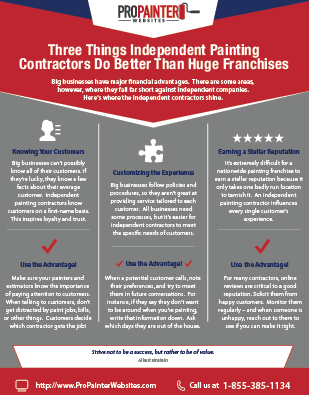Find Out About The Ways In Which Seasonal Factors Can Influence The Success Of Industrial Exterior Paint And Establish The Very Best Times To Achieve Long-Term Results For Your Project
Find Out About The Ways In Which Seasonal Factors Can Influence The Success Of Industrial Exterior Paint And Establish The Very Best Times To Achieve Long-Term Results For Your Project
Blog Article
Web Content Written By-Fox Bagger
When you're preparing an industrial exterior painting job, seasonal aspects can make or damage your outcomes. You'll want to take into consideration how temperature and humidity effect paint application and drying out times. Picking the appropriate period can ensure your paint adheres appropriately and lasts longer. But which seasons are genuinely the best for this type of job? Let's explore Read Alot more that can influence your project's success.
The Effect of Temperature Level on Paint Application
When you're preparing a commercial outside painting project, the temperature can significantly influence exactly how well the paint sticks and dries out.
Ideally, you want to paint when temperature levels vary between 50 ° F and 85 ° F. If it's also cool, the paint may not cure correctly, bring about problems like peeling off or cracking.
On the flip side, if it's too warm, the paint can dry out too rapidly, avoiding proper bond and resulting in an unequal finish.
You must additionally think about the time of day; morning or late afternoon provides cooler temperature levels, which can be extra desirable.
Constantly examine https://whyy.org/articles/wyeth-paintings-brandywine-museum/ for the details paint you're utilizing, as they frequently offer support on the perfect temperature variety for optimal results.
Moisture and Its Effect on Drying Times
Temperature level isn't the only ecological aspect that influences your industrial external painting job; moisture plays a significant duty too. High humidity degrees can slow down drying times dramatically, influencing the general high quality of your paint work.
When the air is saturated with dampness, the paint takes longer to cure, which can bring about concerns like bad bond and a greater risk of mold growth. If you're painting on a specifically humid day, be planned for extended wait times in between layers.
It's crucial to check regional weather conditions and plan as necessary. Preferably, aim for humidity degrees between 40% and 70% for optimum drying out.
Keeping these consider mind ensures your job stays on track and supplies a long lasting finish.
Best Seasons for Commercial Outside Painting Projects
What's the very best time of year for your commercial outside painting tasks?
Springtime and early loss are normally your best options. Throughout these seasons, temperature levels are mild, and humidity degrees are commonly lower, producing optimal conditions for paint application and drying out.
Stay clear of summertime's intense heat, which can trigger paint to completely dry as well rapidly, leading to bad attachment and coating. In a similar way, wintertime's chilly temperature levels can prevent correct drying and healing, risking the longevity of your paint work.
Aim for days with temperature levels in between 50 ° F and 85 ° F for optimum outcomes. Keep in mind to examine the local weather report for rain, as damp conditions can ruin your task.
Planning around these variables guarantees your paint job runs smoothly and lasts much longer.
Conclusion
To conclude, planning your business outside painting jobs around seasonal factors to consider can make a significant difference in the outcome. By scheduling work during the perfect temperatures and moisture degrees, you'll guarantee much better attachment and drying times. Remember to keep an eye on local weather forecasts and select the correct time of year-- springtime and very early fall are your best choices. Taking these steps will aid you accomplish a long lasting and professional coating that lasts.
